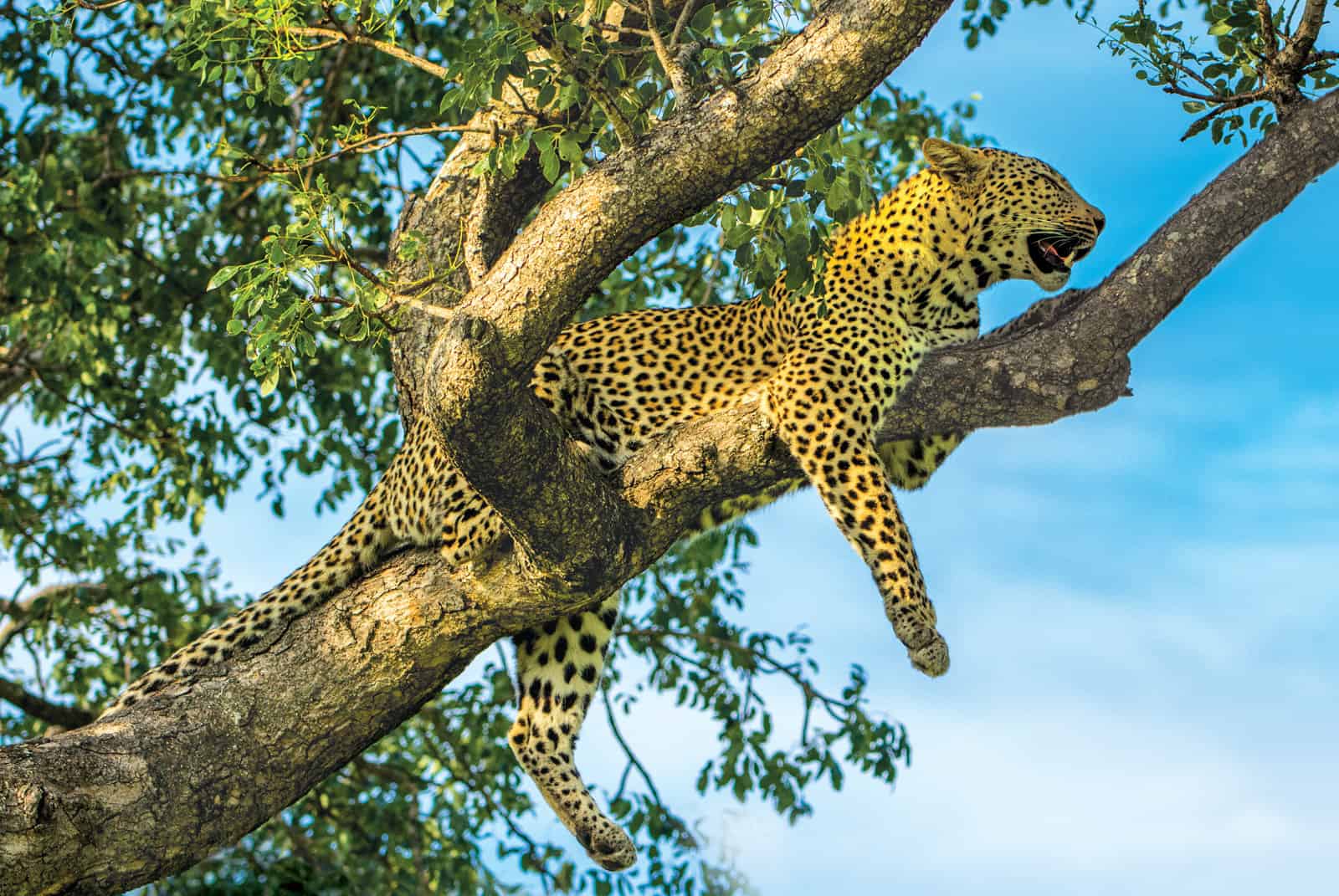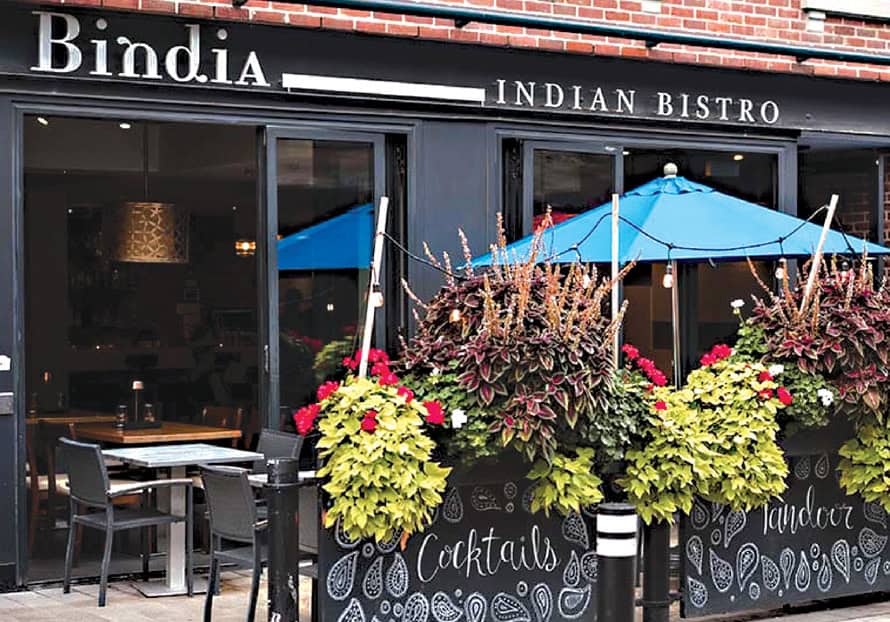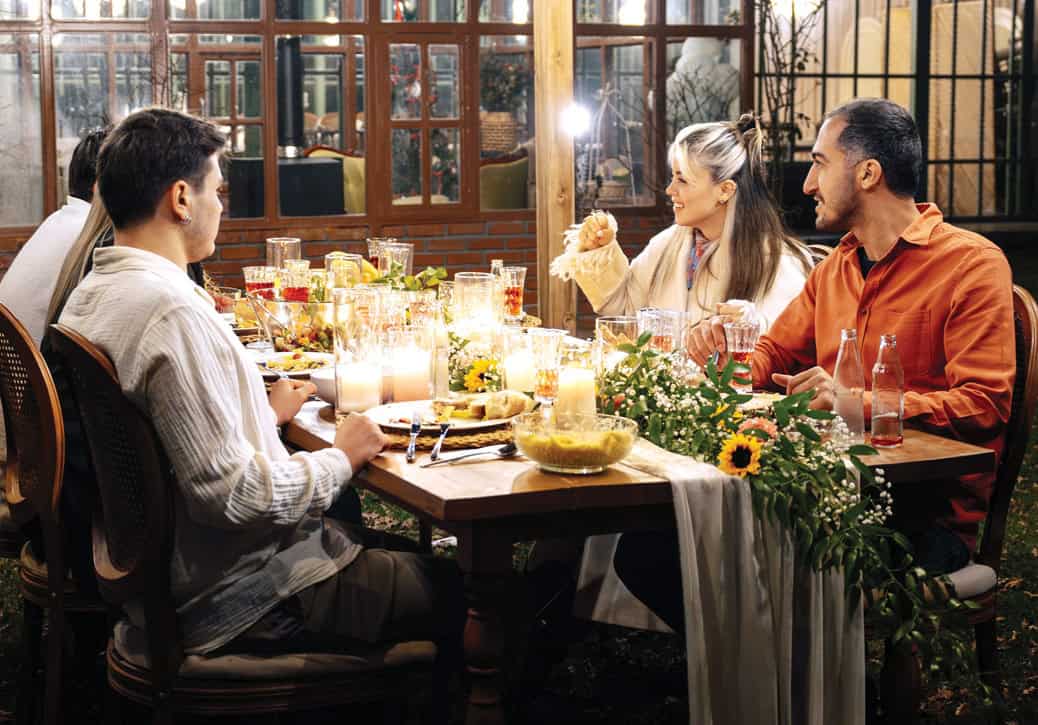This camp is a favourite for big cat lovers
By Caroline Tapp-McDougall
Located high on a ridge of the world-famous Sabi Sand Wildtuin overlooking the magnificent Sand River, conservation-minded Kirkman’s Kamp has a gracious and rich history that brings guests back in time to the classical ambiance of the original 1920s homestead.
Once the home of cattle farmer-turned-conservationist, Harry Kirkman, the Kamp shares not only his name but an unfenced boundary with the area’s renowned Kruger National Park in the Sabi Sand. Part of a conservation area that covers over two million hectares (almost five million acres), in the north-east of South Africa and in the eastern part of the Mpumalanga province, the Kamp is privileged to have 26,000 acres of exclusive, unspoiled land to traverse.

Sabi Sand is home not only to Africa’s Big Five (the lion, tiger, leopard, cougar and jaguar), but also to a diverse collection of hundreds of rare and iconic species. Plus, a little known but exciting fact for novices, the Kamp is also known worldwide for its prolific leopard sightings.
Accommodation-wise, the décor is best described as “old meets new” in one of Kirkman’s 12 comfortably air-conditioned guest cottages with antique-styled beds, picturesque private verandas and views of the Sand River.
Recently redesigned by South African based Fox Browne Creative to add a touch of glamour without altering the “mood,” the cottages now have large private bars and upgraded bathrooms with grand showers and double
vanities, colourful wallpaper murals and new outdoor seating areas. In keeping with the twenties style, finishes are embossed tiles along with ribbed glass and marble. Without losing the sense of stepping back, the lodge’s guest areas with their historical photographs, paintings and memorabilia have been refreshed with new furniture, lighting and wooden floors to provide a warmer more contemporary edge. There is also an inviting new coffee bar and a restyled dining room.
A quiet library offers a restful sanctuary filled with interesting reads, while the classical sitting room provides the ultimate setting for simply relaxing with a cup of coffee or a pre-dinner drink.

Breakfast and lunch can be taken on shady verandas with afternoon tea served on the rolling lawn. Dinner is a magnificent affair, where mouth-watering Pan-African menus can be enjoyed on the lawn in a traditional African Boma built of branches or in a stunning candlelit bush setting.
Hidden in the bushscape, there’s an unexpected family-friendly, rim-flow swimming pool with impeccable views of a waterhole brimming with activity. It’s the perfect spot to head to cool off after a thrilling game drive.
Safaris are led by experienced ranger and tracker teams who drive open 4×4 vehicles and practice sensitive off-roading practices with strict vehicle limits at exclusive sightings drives. As previously acknowledged, the Sabi Sand Game Reserve is well-known for its daylight leopard sightings and guests may well be fortunate enough to spot one of these elusive, magnificent cats resting after a successful night hunt.
While wildlife is the biggest draw for most travellers, the guide and tracker teams are also equipped with a wealth of knowledge about the area’s vegetation, including the traditional and medicinal uses of various plants. Birding enthusiasts can ask their guide to identify birds that are specific to the region as well as notable migrant species. Guests with a special interest in photography should let their guide know, as he will then take extra care to position the vehicle to make the best possible use of the available light at wildlife sightings. Afternoon game drives may also continue after dark, with a specially filtered spotlight used to illuminate wildlife that remains active at night.

Most trackers come from the areas immediately surrounding the game reserve and, as such, will be full of interesting information regarding the region’s culture, language and traditions, as well as local folklore. Interpretive bush and nature walks, private family afternoons and even a game of croquet or tennis, complete with Pimm’s and strawberries, are always on the Kirkman agenda. And, should you come with little adventurers, the Lodge’s WILDchild programme designed for visiting children is filled with fun, and interactive learning activities. Tours can also be tailor-made for private groups or honeymooners.
When staying at Kirkman’s Kamp, guests indirectly contribute to conservation initiatives across the Sabi Sand Game Reserve, from anti-poaching missions and general wildlife management, and projects like The Leopard Conservation Project, which focuses on the active research, monitoring and identifying of leopards in partnership with Panthera.
Rates at andBeyond Kirkman’s Kamp start from approx. 777 US dollars per person per night.

Big cats
Panthera is the only organization in the world that is devoted exclusively to the conservation of the world’s 40 wild cat species and their ecosystems.
Utilizing the expertise of the world’s premier cat biologists, Panthera develops and implements global strategies for the most imperiled large cats: tigers, lions, jaguars, snow leopards, cheetahs, pumas, and leopards and partners with local and international NGOs, scientific institutions, local communities, governments around the globe, and citizens who want to help ensure a future for wild cats.
Panthera’s grants program, the Small Cat Action Fund (SCAF), additionally supports conservation and research initiatives on many of the smaller wild cat species around the globe.
Getting to Kirkman’s Kamp
Airlink offers daily scheduled flights from Johannesburg to Skukuza airport, which is followed by an easy drive to the camp. Alternately,
it is a five-hour drive from Johannesburg, on very good roads, in a two-wheel-drive vehicle.








